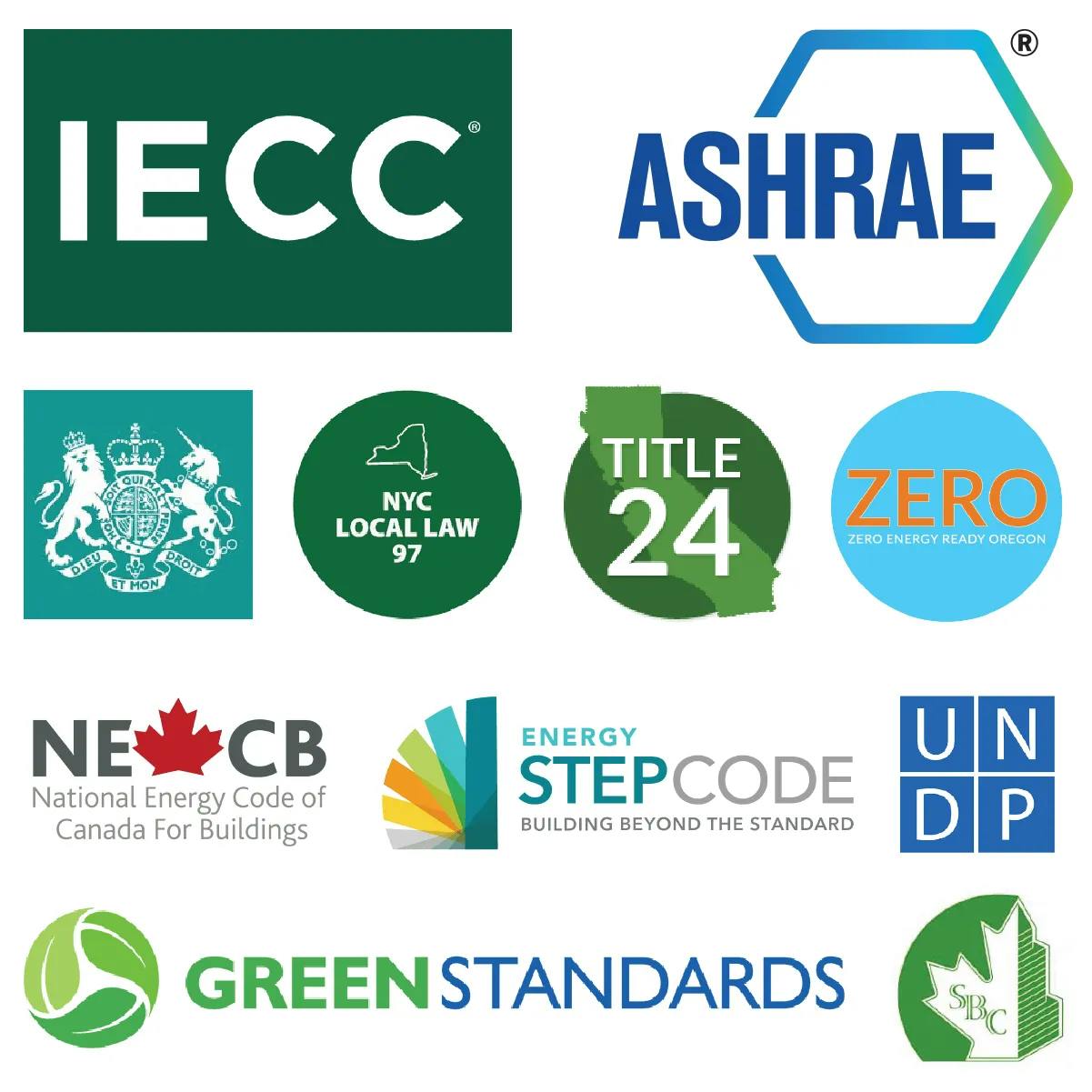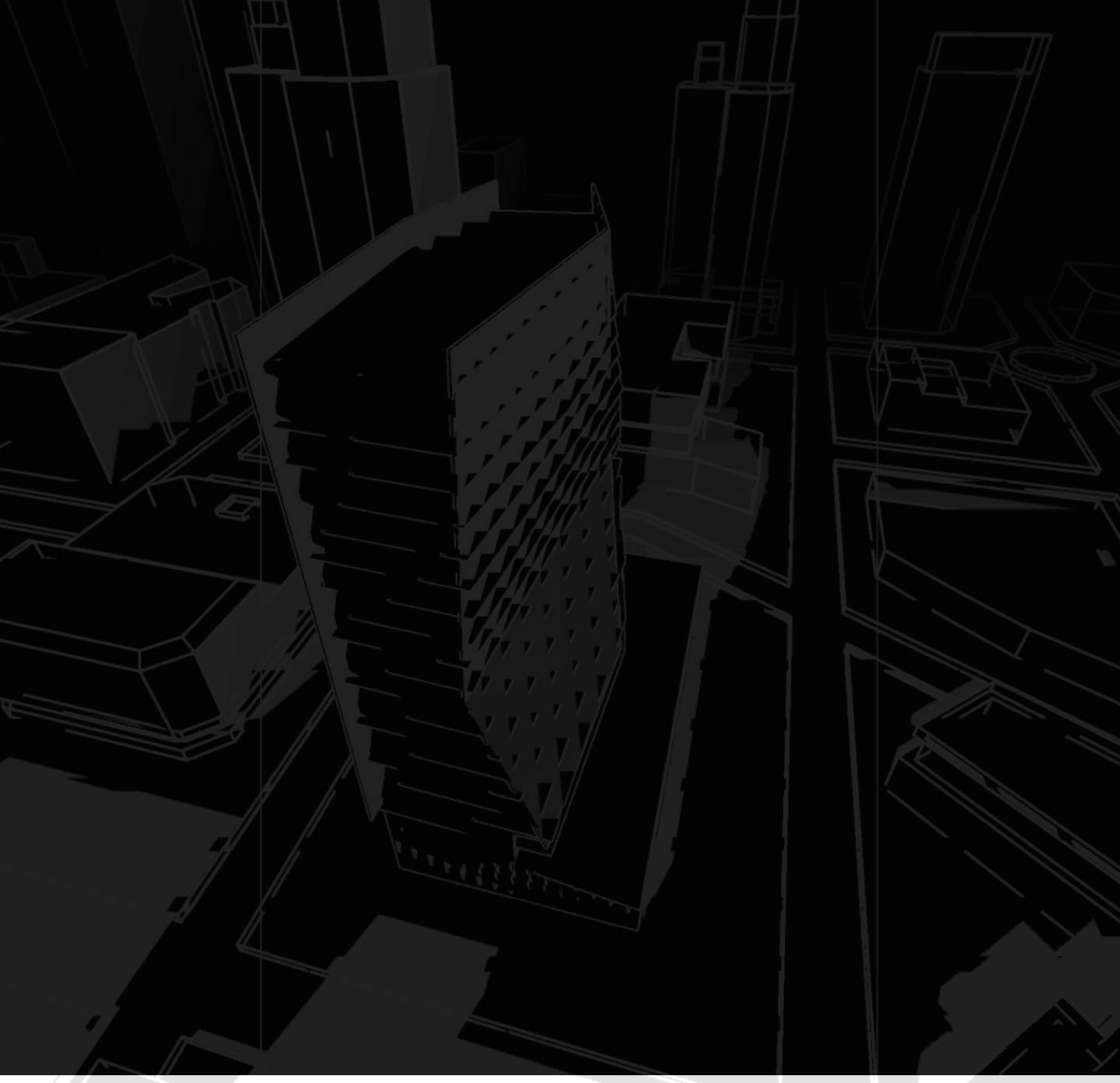Table Of Contents
- Energy Codes Adopted at State Level
- American Society of Heating, Refrigerating and Air-Conditioning Engineers (ASHRAE) Standard 90.1
- The International Energy Conservation Code (IECC)
- The California Building Standards Commission’s Title 24
- 2020 Vermont Commercial Building Energy Standards (CBES)
- NYC Energy Conservation Code (NYCECC)
- 2018 Washington State Energy Codes
- Compliance Solutions
Table Of Contents
- Energy Codes Adopted at State Level
- American Society of Heating, Refrigerating and Air-Conditioning Engineers (ASHRAE) Standard 90.1
- The International Energy Conservation Code (IECC)
- The California Building Standards Commission’s Title 24
- 2020 Vermont Commercial Building Energy Standards (CBES)
- NYC Energy Conservation Code (NYCECC)
- 2018 Washington State Energy Codes
- Compliance Solutions

In an effort to reduce energy consumption and combat climate change, the United States has adopted rigorous energy standards across its states and territories. Energy codes in the United States have become increasingly stringent over the last few years, supported by the notion that increasing regulation nationwide will ultimately aid in the country’s efforts to reach its national sustainability targets. According to Architecture 2030, roughly 40% of all energy consumption in the United States comes from commercial and residential buildings.
The United States is among the many countries that place high importance on sustainability and are expected to continue to strengthen regulation throughout the coming years. A majority of the energy codes in the U.S. have been adopted at the state level. However, there have been discussions of implementing mandates on a national scale.
Information updated on August 2, 2024
Energy Codes Adopted at State Level
Many western states have adopted the most recent energy codes, as they are known for placing high importance on sustainability and the environment. According to the 2022 State Energy Efficiency Scorecard (American Council for an Energy-Efficient Economy), California currently exhibits the most stringent net-zero energy building codes but and it is followed by several states in the northeast.
There is a distinct dissimilarity between the stringency of energy codes in the northeast and southeast regions, with states like Georgia, North Carolina, and Alabama only adopting The International Energy Conservation Code IECC 2015. Only two states go below 2015, South Carolina (using 2009 IECC) and Oklahoma (using 2006 IECC). Despite the differences in regulation on the state level, many of these codes display similarities. In this article, we cover U.S. energy codes, what they are, and how they differ on the state level. The state-level energy codes can be seen in the map below.

U.S. Energy Codes 2024 (cove.tool)
American Society of Heating, Refrigerating and Air-Conditioning Engineers (ASHRAE) Standard 90.1
ASHRAE 90.1 is an energy standard for buildings that excludes low-rise residential buildings. It provides the minimum requirements for the energy-efficient design of most buildings and offers, in detail, the minimum energy-efficient requirements for design and construction for new buildings and their systems. Furthermore, the standard has been historically used as a benchmark within the Leadership in Energy and Environmental Design (LEED) rating system, administered by the U.S. Green Building Council (USGBC). Their most recent release, LEED v5, references to ASHRAE 90.1-2016.
Many western states, including Colorado, Utah, New Mexico, Oregon, and Nevada have adopted the 2019 standard which includes revisions to envelope, lighting, and mechanical directives. Also, the scope of the standard was expanded to cover more building types and systems and definitions were clarified and updated to better reflect modern construction and system technologies. Additionally, authorities with jurisdiction mandate compliance with the IECC, including compliance with ASHRAE 90.1 in their compliance path. While there are differences between the codes, they are highly nuanced and share similar obligations.
The International Energy Conservation Code (IECC)
The International Energy Conservation Code (IECC) is a model code that regulates the energy conservation requirements of new buildings. It addresses various factors for efficiency, including cost, energy usage, and the total environmental impact of the natural resources used in buildings.
The code was first put into effect roughly a decade ago and has since helped prevent millions of tons of carbon from entering our atmosphere. Communities that have adopted IECC 2018 or later have also seen significant savings for their businesses and residents since the decrease in energy use can save residents thousands of dollars each year.
The IECC is the model code and ASHRAE 90.1 is the standard in which the model code is based. States and municipalities will typically modify the model IECC code by amendments. The main difference between IECC and ASHRAE 90.1 are inputs like Lighting Power Density (LPD) Equipment Power Density (EPD), and sometimes equipment efficiencies.
The California Building Standards Commission’s Title 24
Among the most notable standards implemented by the United States is The California Building Standards Commission’s Title 24. The code is designed to reduce unnecessary energy consumption during the construction of new buildings and the remodeling of existing structures. The most recent version of the standard is the 2022 edition, Effective as of January 1, 2023. It includes updates across various parts, such as the Building Code (CBC), Electrical Code (CEC), and Green Building Standards Code (CALGreen).
2020 Vermont Commercial Building Energy Standards (CBES)
First put into law in 2006, the Vermont Commercial Buildings Energy Standard (CBES) is an energy code for commercial and residential buildings. In 2020, the CBES included updates that apply to new buildings in addition to renovations and reparative maintenance and is now an alternative compliance path of ASHRAE 90.1 2016. The new standards regulate minimum energy conservation requirements, addressing multiple aspects of energy use such as ventilation, lighting, water heating, and power usage. The Vermont law states that owners are required to design and construct buildings in compliance with CBES and that the design must be certified by the primary designer and the certification issued by the builder.
NYC Energy Conservation Code (NYCECC)
The New York City Energy Conservation Code (NYCECC) is made up of local laws and the current energy conservation codes. Although the standard was created by New York City, state law declares that local government energy codes, including those listed in NYCECC, must be more stringent than the Energy Conservation and Construction Code of New York State (ECCCNYS).
2018 Washington State Energy Codes
The 2018 Washington State Energy Codes (WSEC) aim to provide guidelines for new construction and provide builders with an outcome-based energy budget compliance path. The code highlights several requirements, including a maximum Energy Use Intensity (EUI) budget for each building occupancy/use type. The compliance path also limits the total heat loss coefficient (UA) for building enclosures, allowing for no more than 20% higher than the level mentioned in the prescriptive code.
Compliance Solutions
Climate change is occurring rapidly, and energy codes can help the United States support its climate change initiatives. The AEC industry has power to make a significant impact on accelerating the adoption of the newest codes. Today, quite a few U.S. states have adopted the ASHRAE 90.1 2019 standard, and more states are expected to update their codes in the coming years, facilitating a proactive response from architects around the country.
Managing compliance with energy codes can be difficult; nevertheless, the challenges can be easily mitigated using building performance analysis tools. Energy code automation takes the legwork out of energy code compliance, helping engineers save time and money.

Disclaimer:
We also accommodate variations in city/ state codes that may somewhat differ from standard guidelines of ASHRAE and IECC. Notable examples of state codes with significant deviations from these standards include the California Building Standards Commission’s Title 24, the 2020 Vermont Commercial Building Energy Standards (CBES), the NYC Energy Conservation Code (NYCECC), and the 2018 Washington State Energy Codes. Furthermore, codes can be customed in alignment with local jurisdiction where there is no statewide enforcement.
The United States' adoption of stringent energy codes in 2024 underscores a national commitment to reducing energy consumption and addressing climate change. With nearly 40% of the country's energy usage stemming from commercial and residential buildings, the implementation of state-level energy codes, such as California's Title 24, the IECC, and ASHRAE Standard 90.1, plays a pivotal role in achieving sustainability targets. These codes, varying in stringency from state to state, highlight the nation's diverse approach to energy efficiency and sustainability.
cove.tool's project.assist empowers architectural firms to lead in sustainable design with AI-powered consulting and advanced analytics. By offering on-demand, comprehensive reports tailored to specific projects, project.assist simplifies the process of meeting compliance with ever-changing energy codes through cost-effective, customizable solutions. This streamlined path to sustainability not only saves time and resources but also empowers architects to design buildings that are both efficient and compliant.
cove.tool's integration into the architectural design process exemplifies how technology can facilitate the transition towards more sustainable building practices. As the United States continues to enhance its energy regulations, cove.tool's project.assist stands out as a critical ally for architects, ensuring that compliance is not a barrier to innovation but a pathway to achieving energy efficiency and sustainability in the built environment.
